Imagine you’re on a detective mission in the world’s most challenging escape room, navigating the puzzling maze of parenthood. Suddenly, Child Protective Services (CPS) in Texas enters the scene, bringing the CPS guidelines for child removal in Texas to the forefront like a plot twist in a gripping thriller!
Short Answer: Are you curious about the CPS guidelines for child removal in Texas? Get ready to unlock the secrets of this parenting enigma.
Hold onto your magnifying glass, because in this blog post, we’re about to unravel the mysterious world of CPS guidelines in Texas. Think of it as your crash course in “Parenting Detective 101.” We’ll dive into emergency removals, foster care placements, kinship care, and the intriguing process of terminating parental rights. So, keep reading if you’re up for a thrilling adventure that’s bound to leave you informed and entertained!

CPS Guidelines for Child Removal in Texas: Understanding Your Rights and Responsibilities
Understanding Parental Rights During a CPS Investigation in Texas
When Child Protective Services (CPS) becomes involved with a family in Texas, questions such as “Can CPS remove your child from your home in Texas using force?” become particularly relevant. It is crucial for parents to understand the CPS guidelines for child removal in Texas. During a CPS investigation, parents are entitled to certain rights and responsibilities. These include the right to be treated with fairness and respect, to be fully informed about the investigation’s purpose, the allegations against them, and the potential outcomes. Additionally, parents should know their rights, including the option to have an attorney present during proceedings and the ability to present their side of the story.
Key Factors in CPS’s Decision to Remove a Child in Texas
In Texas, CPS considers a range of factors when deciding whether to remove a child from their home, guided by the CPS guidelines for child removal. These factors include the immediate risk of harm, the severity of alleged abuse or neglect, the parents’ ability to provide a safe environment, and any history of prior incidents. CPS also evaluates the child’s overall well-being, encompassing their physical, emotional, and psychological needs. The decision to remove a child is made with the utmost care, aiming to ensure the child’s safety and well-being.
CPS Guidelines for Child Removal in Texas: Evidence and Court Procedures
Presenting Evidence in Texas Removal Hearings: CPS and Parental Perspectives
Under the CPS guidelines for child removal in Texas, removal hearings are a critical stage where both Child Protective Services (CPS) and parents present evidence. CPS might introduce testimonies from caseworkers, medical professionals, and teachers, along with documents like medical records, police reports, and past CPS investigations. Parents, on their end, can present witness testimonies, character references, or evidence of efforts to rectify any issues. The judge meticulously reviews all evidence before reaching a decision, ensuring a fair and just process.
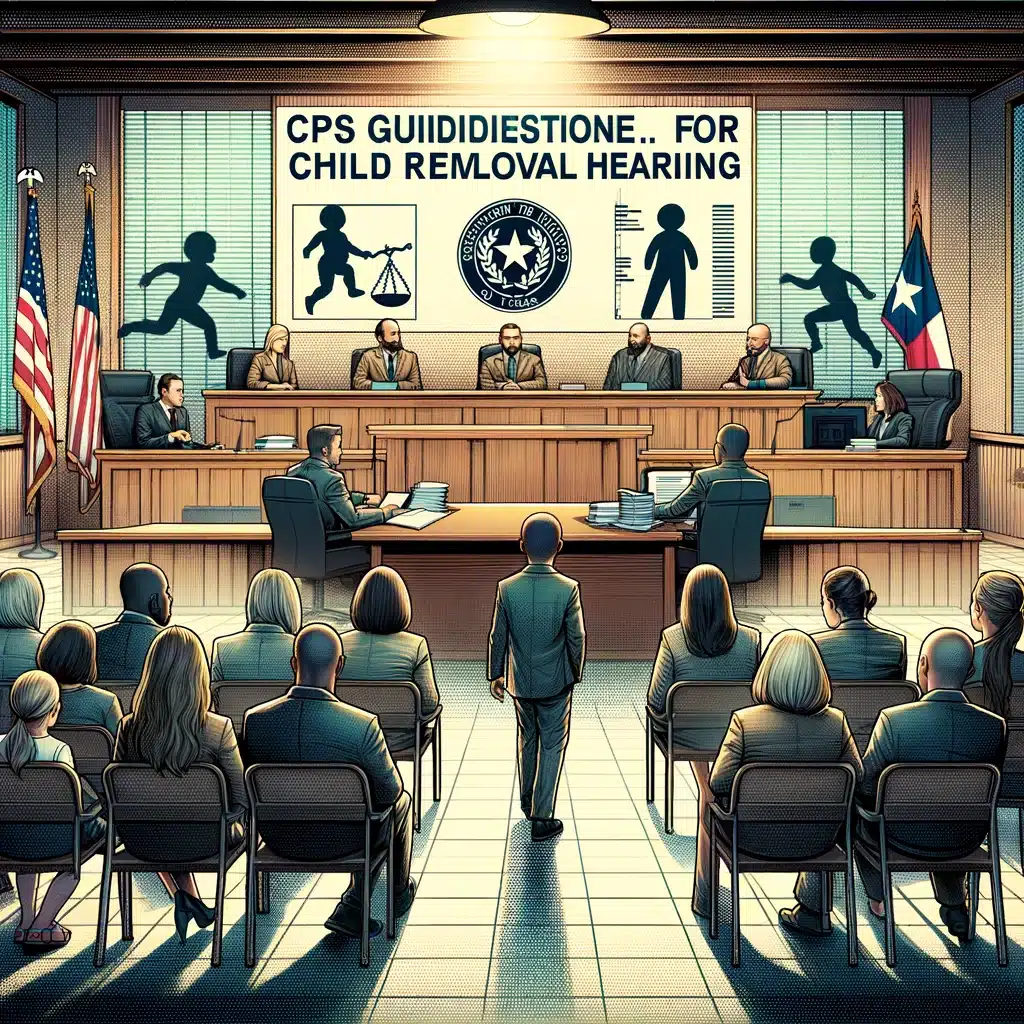
Judge’s Role in Texas CPS Removal Decisions: Balancing Law and Child Welfare
In Texas, the judge’s decision on child removal or temporary custody is pivotal. They scrutinize the presented evidence, legal arguments, and prioritize the child’s best interests. The judge assesses witness credibility and potential risks to the child’s safety. Their decision, guided by CPS guidelines for child removal in Texas, hinges on the case specifics and relevant laws, with the child’s welfare as the paramount concern.
Exploring Alternatives to Removal in Texas: FBSS and PCSP Under CPS Guidelines
In line with the CPS guidelines for child removal in Texas, alternatives to removal are considered to safeguard a child’s welfare. Family-Based Safety Services (FBSS) offers in-home support to address issues while keeping the child with their parents. Parental Child Safety Placement (PCSP) involves temporarily placing the child with a relative or trusted individual while parents resolve CPS concerns. These options strive to preserve family ties and foster reunification, reflecting a balanced approach to child protection.
CPS Guidelines for Child Removal in Texas: Parental Involvement in the Investigation Process
Active Parental Participation in Texas CPS Investigations
Under the CPS guidelines for child removal in Texas, understanding how your interfering with a Child Protective Services investigation can impact the process is crucial. Parental involvement is a key aspect of these investigations. Parents are encouraged to actively participate, which encompasses attending meetings, providing necessary information, and cooperating with caseworkers. Communicating their perspectives, concerns, and efforts to address any issues effectively is vital. Such active engagement not only demonstrates a parent’s commitment to their child’s well-being but also helps work towards a favorable outcome while avoiding actions that could be seen as interference in the CPS process.

Reunification Process and Timeline Following Child Removal in Texas
Following the CPS guidelines for child removal in Texas, it’s important to understand the crucial information relating to the removal of your child during a Child Protective Services case and what CPS looks for in placing your child after removal from your home. If a child is removed, CPS initiates a reunification process with a set timeline. The specific steps in this process can vary depending on the individual case and the progress made by the parents. CPS works in partnership with parents to resolve identified concerns, such as participating in counseling or parenting classes, improving living conditions, or addressing substance abuse issues. Successful reunification hinges on the parents’ ability to address these issues effectively and demonstrate their ability to provide a safe and nurturing environment for their child.
|
CPS Investigation Process |
Parental Involvement and Participation |
|
1. Initial Contact: CPS initiates an investigation based on a report or complaint received. |
1. Active Cooperation: Parents play a crucial role by actively cooperating with CPS during the investigation. |
|
2. Interviews and Home Visits: CPS caseworkers conduct interviews with parents, children, and other individuals involved. Home visits are also conducted to assess the living conditions. |
2. Open Communication: Parents should maintain open communication with CPS caseworkers, providing necessary information and addressing any concerns or questions they may have. |
|
3. Gathering Evidence: CPS gathers evidence through interviews, observations, and document review to assess the safety and well-being of the child. |
3. Providing Documentation: Parents should provide relevant documentation, such as medical records or school reports, to help CPS in their assessment. |
|
4. Case Plan Development: CPS develops a case plan outlining the necessary steps to ensure the child’s safety and well-being. |
4. Active Involvement in Case Planning: Parents should actively participate in the development of the case plan, sharing their insights and concerns. |
|
5. Monitoring and Services: CPS monitors the progress of the case plan and provides necessary services or referrals to support the family. |
5. Collaboration with CPS: Parents should collaborate with CPS, attending meetings, and following through with recommended services or programs. |
|
6. Review and Closure: CPS reviews the case to determine if the child can safely remain with the family or if further action is needed. |
6. Regular Communication: Parents should maintain regular communication with CPS to stay informed about the progress of the case and address any changes or concerns. |
|
7. Reunification or Alternative Placement: If the child was removed, CPS works towards reunification once the safety concerns are resolved. If removal was necessary, CPS seeks to provide suitable alternative placement options. |
7. Working Towards Reunification: Parents should actively work towards meeting the requirements for reunification, attending counseling or parenting classes as recommended. |
|
8. Ongoing Support: CPS may continue to provide support services even after the case is closed to ensure the family’s ongoing well-being. |
8. Seeking Support: Parents should seek support from community resources or counseling services to address any ongoing challenges and promote a healthy family environment. |
CPS Guidelines for Child Removal in Texas: Navigating Legal Representation and Support Services
Legal Representation for Parents in Texas CPS Hearings
Under the CPS guidelines for child removal in Texas, parents involved in CPS hearings have a fundamental right to legal representation. Securing an experienced attorney who is well-versed in family law or child welfare cases is crucial. An attorney can offer essential guidance, assist in understanding parental rights, and provide strong advocacy during court proceedings. Competent legal representation is pivotal in influencing the outcome of a CPS case and safeguarding the parents’ interests.

Access to Support Services During and After CPS Investigations in Texas
In line with the CPS guidelines for child removal in Texas, various support services are available to parents during and after a CPS investigation. These services are designed to help parents address CPS concerns and foster positive family dynamics. Available support includes counseling, parenting classes, substance abuse treatment, housing assistance, and financial aid. Utilizing these services is vital for parents to improve their circumstances and strive for reunification with their child.
The Impact of Child Removal on Emotional Well-being and Adjustment
Following the removal of a child according to the CPS guidelines for child removal in Texas, recognizing your family as a resource during a Child Protective Services case is crucial. Such removals can have a significant emotional impact on the child, who may experience confusion, fear, sadness, and a sense of loss. It’s vital for CPS and related professionals to collaborate with the family, utilizing them as a key resource in providing the necessary support and resources to help the child cope with these emotional challenges. Efforts should focus on restoring stability, offering therapeutic services, and fostering healthy relationships within the family network, which are essential in supporting the child through this difficult transition.
Parental Rights and Visitation Rights during a CPS Case
Parents maintain certain rights during a CPS case, including the right to visit their child, unless a court determines that visitation would be harmful to the child’s well-being. Visitation plans are often established to ensure that the child maintains a relationship with their parents while their safety is safeguarded. The frequency and duration of visitation may vary depending on the circumstances and progress made by the parents. It is important for parents to comply with visitation orders and actively engage in positive interactions with their child.
CPS Guidelines for Child Removal in Texas: Understanding Appeals and Navigating the System
Appeals and Recourse for Parents in Texas CPS Decisions
Under the CPS guidelines for child removal in Texas, parents dissatisfied with CPS decisions have the right to appeal and explore recourse options. This process may involve filing an appeal with the relevant court or seeking legal counsel to consider alternative avenues. It’s crucial for parents to be aware of the specific procedures and timelines involved in appeals and to seek guidance from an attorney experienced in navigating this process. Engaging in the appeals process enables parents to exercise their rights and challenge decisions they believe are unfair or unjust.
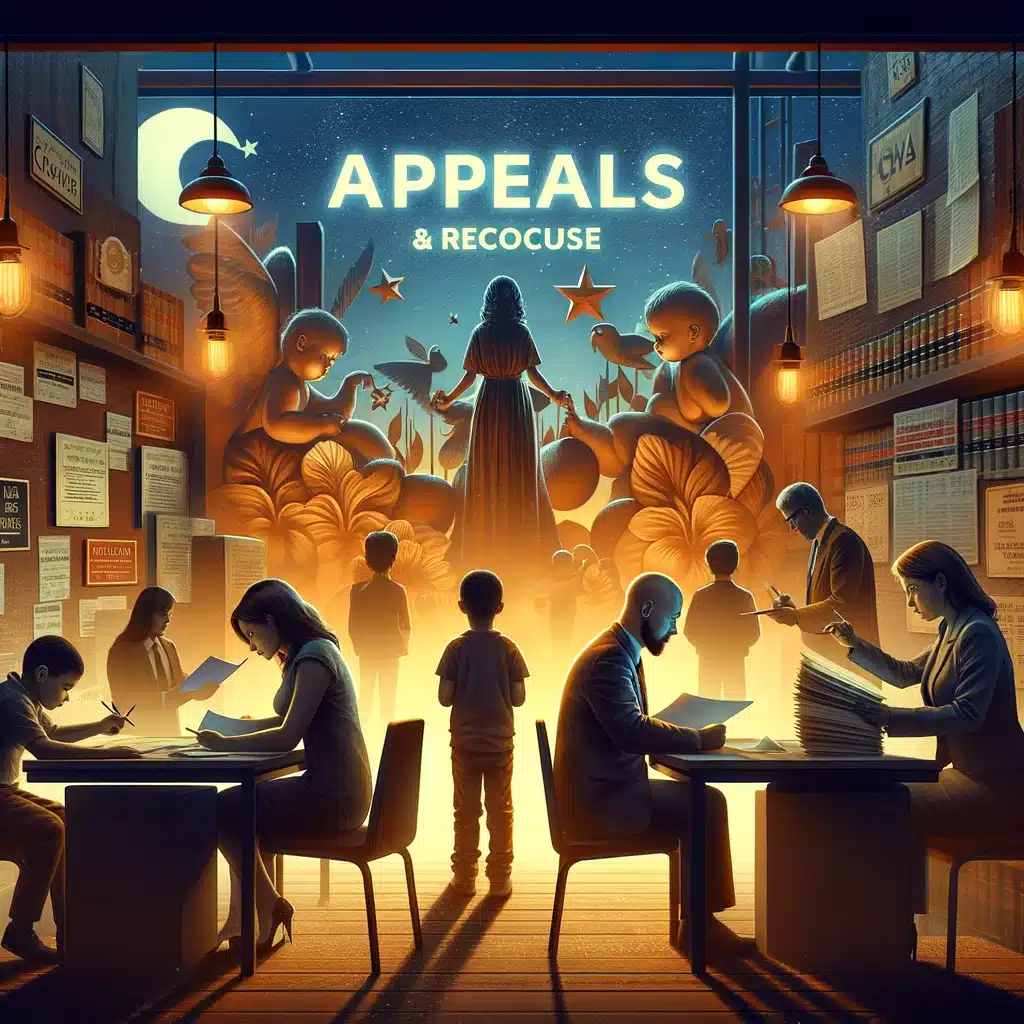
CPS Guidelines for Child Removal in Texas: An In-Depth Exploration
In a situation where Child Protective Services (CPS) becomes involved with your family, understanding the CPS guidelines for child removal in Texas is vital. As a parent, you might be grappling with numerous questions: What are your rights and responsibilities? When is emergency removal by CPS justified? How does the process of foster care placement unfold? This article aims to answer these questions and more, providing clarity on the CPS procedures in Texas.
Emergency Removal Under CPS Guidelines for Child Removal in Texas: Immediate Action and Legal Follow-Up
Immediate Danger and Emergency Removal: CPS’s Quick Response in Texas
A crucial component of the CPS guidelines for child removal in Texas involves emergency removal. When a child is in immediate danger, CPS has the authority to remove them from their home without a prior court order. This step is taken to safeguard the child’s immediate safety. Understanding what happens after such an emergency action is essential for both parents and the child involved.
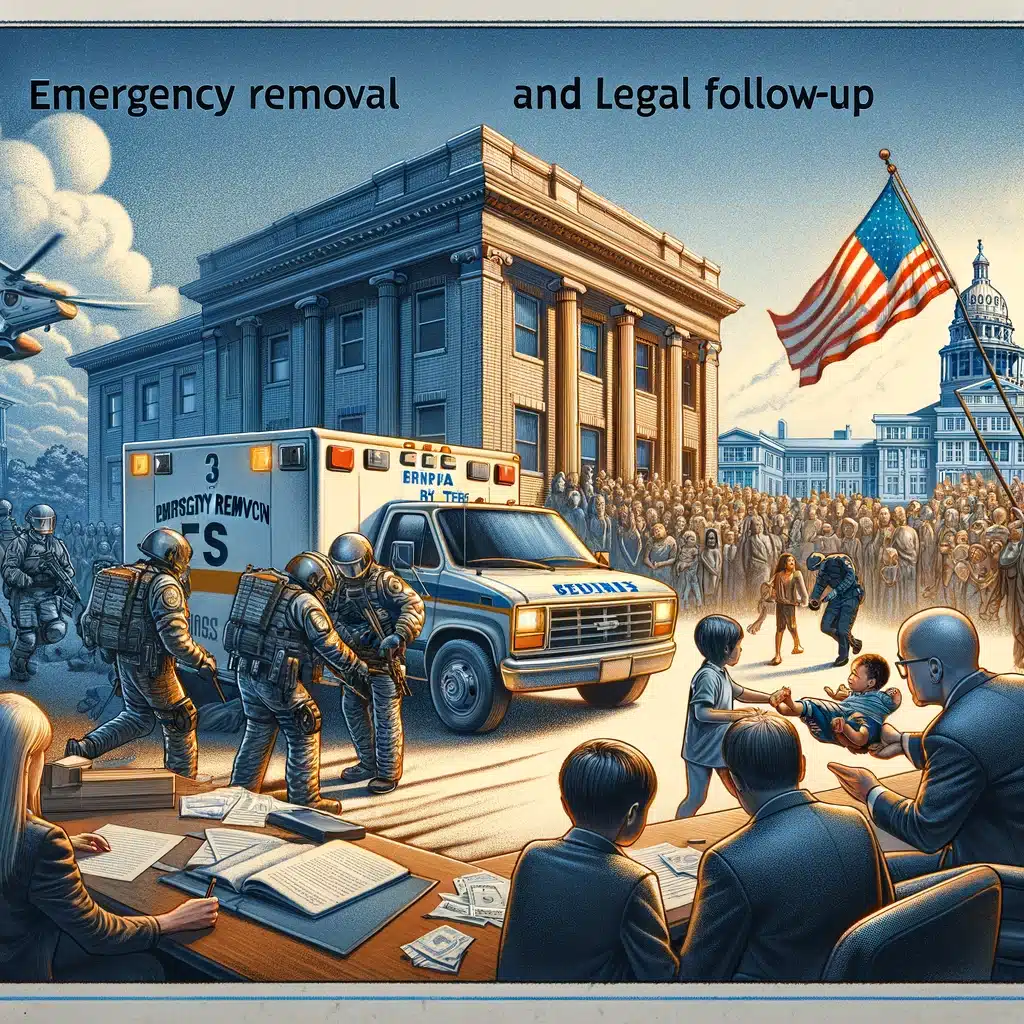
Navigating Post-Removal Legal Procedures in Texas
After an emergency removal, CPS is obligated to swiftly file a petition with the court, typically within 48 hours. The court will then set a hearing, generally within 14 days, to decide if the child should stay under CPS care or be returned to their parents. During this critical period, it’s vital for parents to be aware of their legal rights, including the right to legal representation during these proceedings. This phase of the process is instrumental in determining the child’s future and ensuring that all parties’ rights and responsibilities are duly considered.
CPS Guidelines for Child Removal in Texas: Foster Care Placement and Selection Criteria
Diverse Foster Care Placement Options in Texas
Under the CPS guidelines for child removal in Texas, when a child is removed from their home, the primary goal of CPS is to find a suitable placement that ensures the child’s safety and overall well-being. The options for placement include various types, such as traditional foster homes, therapeutic foster homes tailored for children with special needs, and kinship care, where the child is placed with a relative or close family friend.

Criteria for Selecting the Ideal Placement
The process of determining the most appropriate placement for a child takes into account several critical factors. These include the child’s age, their specific needs, and any special requirements they might have. CPS’s aim in this selection process is to guarantee that the child’s physical, emotional, and psychological needs are adequately addressed in their temporary home. This careful consideration ensures that each child placed in foster care receives the necessary support and care tailored to their individual circumstances.
CPS Guidelines for Child Removal in Texas: Embracing Kinship Care as a Family-Centric Approach
Kinship Care under Texas CPS Guidelines: Maintaining Family Ties
In line with the CPS guidelines for child removal in Texas, kinship care emerges as a valuable option, wherein a child is placed with a relative or a trusted individual like a close family friend. This approach prioritizes maintaining the child within their extended family circle or support network. Especially during tumultuous periods, this continuity can offer the child a sense of stability and emotional comfort, aligning with the child’s need for familiar connections.
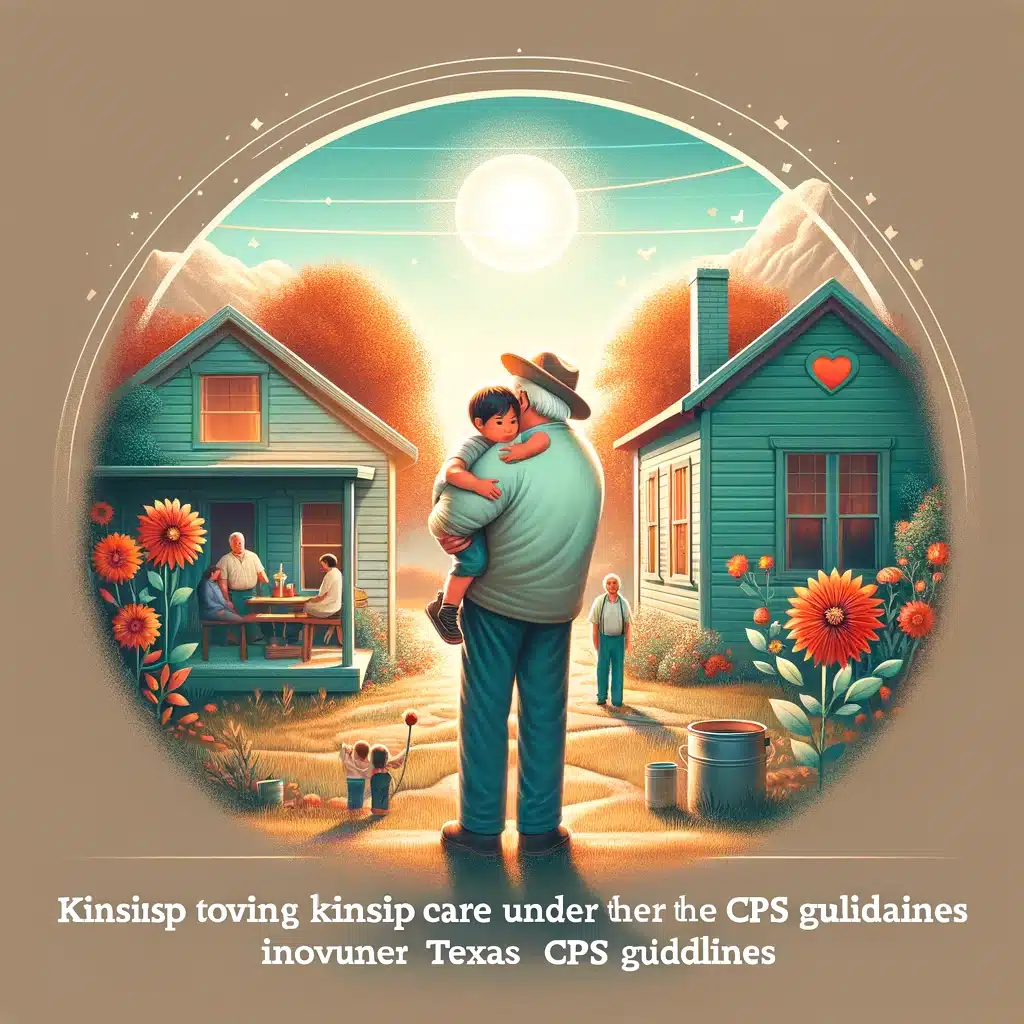
The Kinship Care Assessment and Approval Process in Texas
Under the CPS guidelines for child removal in Texas, the kinship care arrangement involves a thorough assessment by CPS to determine the suitability of the proposed relative or caregiver. Following this assessment, the court plays a crucial role in approving the placement, with a steadfast focus on the child’s best interests. This process ensures that the child’s welfare remains paramount while facilitating a nurturing environment within the family’s broader network.
CPS Guidelines for Child Removal in Texas: Understanding the Gravity of Terminating Parental Rights
The Final Measure: Termination of Parental Rights in Texas
According to the CPS guidelines for child removal in Texas, terminating parental rights is considered a measure of last resort. This drastic step is taken only when it is determined to be in the best interests of the child. Such a decision is typically reached in cases where a parent is unable to provide a safe and nurturing environment, fails to address the concerns raised by CPS, or is otherwise unable to ensure the child’s well-being.

Navigating the Legalities: The Termination Process Explained
The legal process for terminating parental rights under the CPS guidelines in Texas involves a formal court proceeding. During this process, evidence is presented from both sides, and a judge meticulously evaluates all aspects of the case. Given its complexity and emotional intensity, it is vital for parents to have competent legal representation. An attorney can provide essential guidance, represent the parents’ interests, and advocate effectively on their behalf, ensuring that their rights are protected throughout this challenging and consequential legal process.
CPS Guidelines for Child Removal in Texas: Emphasizing Cultural Sensitivity in Diverse Family Settings
Adapting to Diversity: Cultural Sensitivity in Texas CPS Cases
In accordance with the CPS guidelines for child removal in Texas, understanding how marijuana legalization affects CPS cases is integral, especially given the importance of cultural sensitivity in handling these cases. With a wide array of diverse family backgrounds, CPS caseworkers must be acutely aware of and sensitive to various cultural practices, language barriers, and unique family dynamics, as well as the implications of changing laws such as marijuana legalization. This awareness is crucial in accurately assessing the child’s safety and well-being, ensuring that all actions align with both the evolving legal landscape and cultural considerations.

The Role of Child Advocates and Ombudsmen Under Texas CPS Guidelines
Under the framework of the CPS guidelines for child removal in Texas, child advocates and ombudsman services hold a critical role in safeguarding the child’s interests during the CPS proceedings. These advocates serve as the voice for the child, advocating for their rights and ensuring that their needs and well-being remain central in all decision-making processes. Their involvement is instrumental in ensuring that the child’s perspective is heard and considered in every aspect of the CPS case, from initial assessment to potential court proceedings.
CPS Guidelines for Child Removal in Texas: Exploring Mediation and Post-Reunification Support
Mediation and Alternative Dispute Resolution in Texas CPS Cases
Under the CPS guidelines for child removal in Texas, mediation and alternative dispute resolution methods present a valuable opportunity for parents and CPS to amicably resolve disputes outside of the courtroom setting. These approaches offer a more cooperative and less confrontational means of finding mutually agreeable solutions. By engaging in mediation or alternative dispute resolution, all parties can work collaboratively towards the best interests of the child, potentially avoiding the stress and adversarial nature of court proceedings.

Navigating Post-Reunification: Continued Support Under Texas CPS Guidelines
Achieving reunification is a significant milestone after a child has been removed from their home, and it marks a deeply emotional period for families. Adhering to the CPS guidelines for child removal in Texas, various support services are made available to families to facilitate a smooth transition and ensure ongoing well-being post-reunification. These services may encompass counseling, parenting classes, financial assistance, and other resources designed to support the family unit. This continued assistance is crucial in maintaining family stability and promoting the long-term success of the reunification process.
CPS Guidelines for Child Removal in Texas: Assessing Long-Term Outcomes and Parenting Education Programs
Long-Term Impact on Children in Texas CPS Cases
In the context of the CPS guidelines for child removal in Texas, understanding the long-term outcomes for children involved in CPS cases is crucial. Beyond the immediate impact, these experiences can have lasting effects on a child’s life. Research and statistical analysis offer insights into both the positive and negative long-term consequences of CPS involvement. These findings are essential for shaping policies and practices that aim to improve the future well-being of these children, ensuring that the effects of early interventions are beneficial in the long run.

The Role of Parenting Education in Addressing CPS Concerns
Parenting education programs are a cornerstone of efforts to address issues raised in CPS cases in Texas. These programs serve as a crucial resource for parents looking to enhance their parenting abilities and resolve concerns highlighted by CPS. By offering structured guidance and support, parenting education programs help build strong, informed foundations for effective parenting. These educational initiatives are integral in equipping parents with the necessary skills and knowledge to create a stable and nurturing environment for their children, ultimately contributing to the overall goal of family preservation and well-being.
CPS Guidelines for Child Removal in Texas: Enhancing Support Through Collaboration and Parental Involvement in Legal Proceedings
Building Stronger Networks: CPS Partnerships with Child Advocacy Organizations in Texas
In alignment with the CPS guidelines for child removal in Texas, Child Protective Services often works in tandem with local child advocacy organizations. This collaboration is aimed at bolstering the support network available to families involved in CPS cases. Through these partnerships, families gain access to a wider range of resources, assistance, and guidance, enhancing the overall support system. Such cooperative efforts are instrumental in providing comprehensive care and support to both children and parents, ensuring that their needs are adequately met throughout the CPS process.
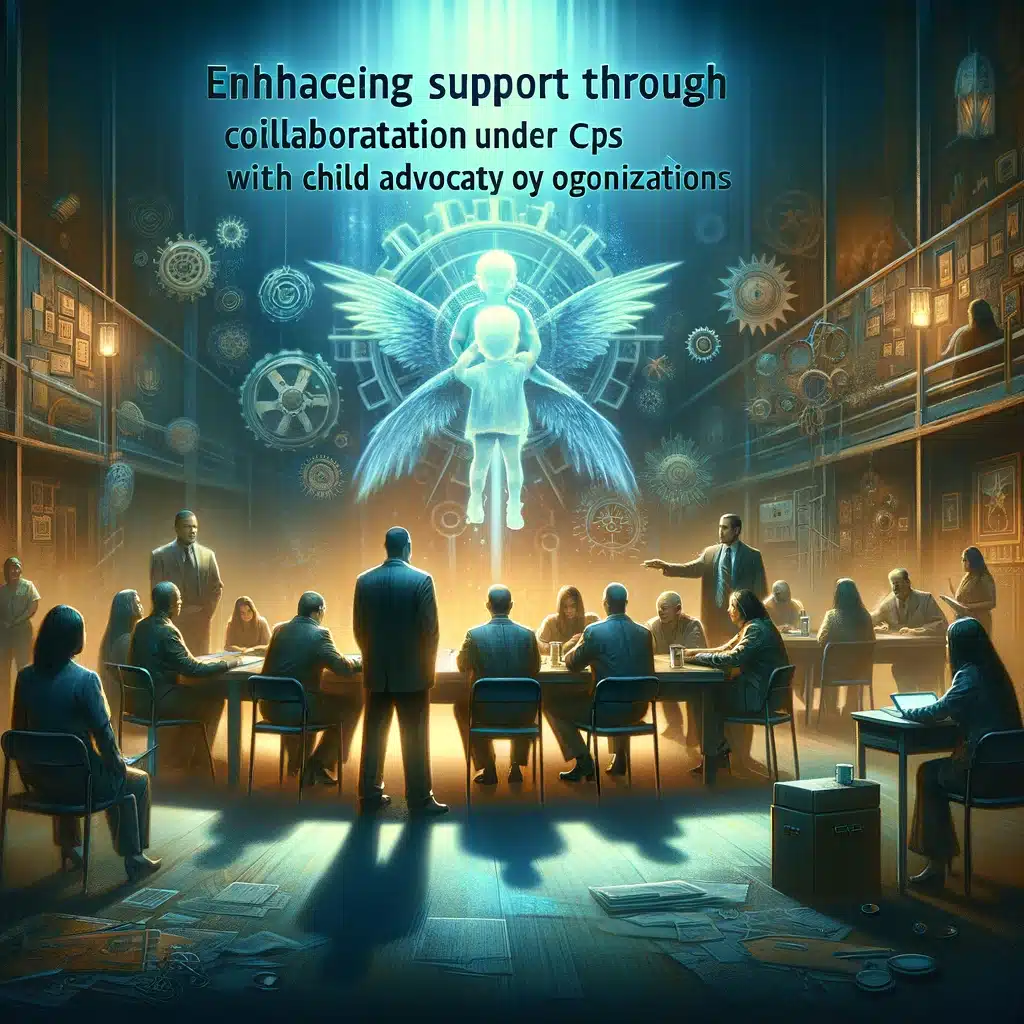
Navigating the Court System: Parental Involvement in CPS Hearings
Parental involvement in court hearings is a critical aspect of the CPS process, as outlined in the CPS guidelines for child removal in Texas. For parents, actively participating in these legal proceedings is essential. It is crucial for parents to understand what to expect during the hearings and to be prepared to engage effectively. Being informed and involved in the court process allows parents to have a say in the proceedings, ensuring that their perspective and rights are considered. This active engagement is key to navigating the legal complexities of CPS cases and advocating for the best interests of their child.
CPS Guidelines for Child Removal in Texas: Utilizing Assessment Tools and Understanding the Reporting Process
Evaluating Child and Family Safety: The Role of Assessment Tools in Texas CPS Cases
In line with the CPS guidelines for child removal in Texas, Child Protective Services employs a variety of assessment tools and methodologies to gauge the safety and well-being of children and families. These assessments are crucial in making informed decisions regarding the child’s placement and addressing the specific needs of the family. By thoroughly evaluating each situation, CPS can tailor their interventions to provide the most effective support and protection for the child and their family.

Empowering the Community: Understanding CPS Reporting Procedures
The process of reporting suspected child abuse or neglect to CPS is an integral part of safeguarding children in Texas, as per the CPS guidelines for child removal. Recognizing the signs of abuse or neglect and understanding the steps involved in reporting are essential for community members. Timely and accurate reporting can play a pivotal role in initiating the protective services process, ensuring that children in potentially harmful situations receive the necessary intervention and support. This awareness and action are key to maintaining the safety and well-being of children within the community.
CPS Guidelines for Child Removal in Texas: The Vital Role of Schools and the Importance of Transparency in CPS
Schools and Educators as Frontline Observers Under Texas CPS Guidelines
In accordance with the CPS guidelines for child removal in Texas, schools and educators hold a critical position in identifying and reporting potential cases of child abuse or neglect. As guardians of children’s well-being, their observance and vigilance are crucial in ensuring the safety and protection of children. Educators’ ability to recognize signs of abuse and take appropriate action by reporting to CPS is instrumental in initiating timely interventions that safeguard the welfare of at-risk children.

Upholding CPS Integrity: Transparency and Accountability Measures in Texas
Transparency and accountability are fundamental components within the framework of the CPS guidelines for child removal in Texas. These measures are key to maintaining the integrity and effectiveness of the Child Protective Services system. By implementing stringent oversight and continuous monitoring, CPS can build and retain public trust. Such practices ensure that the CPS operates ethically and effectively, prioritizing the best interests of children while maintaining a system that is accountable and transparent to the public it serves.
Conclusion:
And there you have it, fellow parenting detectives! We’ve cracked the case on CPS guidelines for child removal in Texas, and it’s been a whirlwind adventure of legal acrobatics, heartwarming surprises, and a few plot twists along the way.
But here’s the real magic trick: parenting isn’t just about navigating the rulebook; it’s about creating a safe and loving environment for your little ones. Remember, while CPS might seem like the mysterious antagonist in your life’s story, their primary goal is to ensure the safety and well-being of children.
So, as you venture back into the wild world of parenting, armed with your newfound knowledge, remember that every parent is a hero in their child’s eyes. The ups and downs, the plot twists, and the heartfelt moments all contribute to a tale uniquely yours.
Now, go forth, brave parents, and continue crafting your own incredible story of love, laughter, and the unbreakable bond you share with your children. And who knows, you might just be the superhero your kids never knew they needed!
Until next time, keep parenting like the rock stars you are!
CPS in Texas: Frequently Asked Questions
What are grounds for CPS to remove a child in Texas?
Grounds for CPS to remove a child in Texas include evidence of abuse, neglect, an immediate danger to the child’s physical health or safety, or if the child has been a victim of trafficking or sexual exploitation.
What CPS Cannot do in Texas?
CPS in Texas cannot enter a home without consent, a court order, or exigent circumstances. They also cannot remove a child from the home without sufficient evidence of harm or danger to the child’s well-being.
Do you have to answer the door for CPS in Texas?
You are not legally required to answer the door for CPS in Texas unless they have a court order. However, not cooperating may lead to further action, including CPS obtaining a court order.
What does Texas CPS look for in a home?
Texas CPS looks for signs of safety and stability in a home, including clean and livable conditions, adequate food and clothing, and a safe sleeping environment for the child.
What is considered an unfit home for a child in Texas?
An unfit home in Texas is typically one where there is evidence of abuse, neglect, or other conditions that pose a risk to the child’s physical or emotional well-being.
What is the new law for CPS in Texas?
The new law for CPS in Texas, as of [insert date], includes [insert key changes or updates in the law]. It’s important to consult the latest legal resources or a legal expert for current information.
How long can a CPS case stay open in Texas?
A CPS case in Texas can stay open for various durations depending on the complexity of the case, typically ranging from a few months to over a year.
Can I sue CPS for emotional distress in Texas?
While it is challenging to sue CPS for emotional distress in Texas, it is possible under certain circumstances, especially if there’s evidence of misconduct or violation of rights. Legal advice should be sought for such actions.
Bryan Fagan, a native of Atascocita, Texas, is a dedicated family law attorney inspired by John Grisham’s “The Pelican Brief.” He is the first lawyer in his family, which includes two adopted brothers. Bryan’s commitment to family is personal and professional; he cared for his grandmother with Alzheimer’s while completing his degree and attended the South Texas College of Law at night.
Married with three children, Bryan’s personal experiences enrich his understanding of family dynamics, which is central to his legal practice. He specializes in family law, offering innovative and efficient legal services. A certified member of the College of the State Bar of Texas, Bryan is part of an elite group of legal professionals committed to ongoing education and high-level expertise.
His legal practice covers divorce, custody disputes, property disputes, adoption, paternity, and mediation. Bryan is also experienced in drafting marital property agreements. He leads a team dedicated to complex family law cases and protecting families from false CPS allegations.
Based in Houston, Bryan is active in the Houston Family Law Sector of the Houston Bar Association and various family law groups in Texas. His deep understanding of family values and his professional dedication make him a compassionate advocate for families navigating Texas family law.




